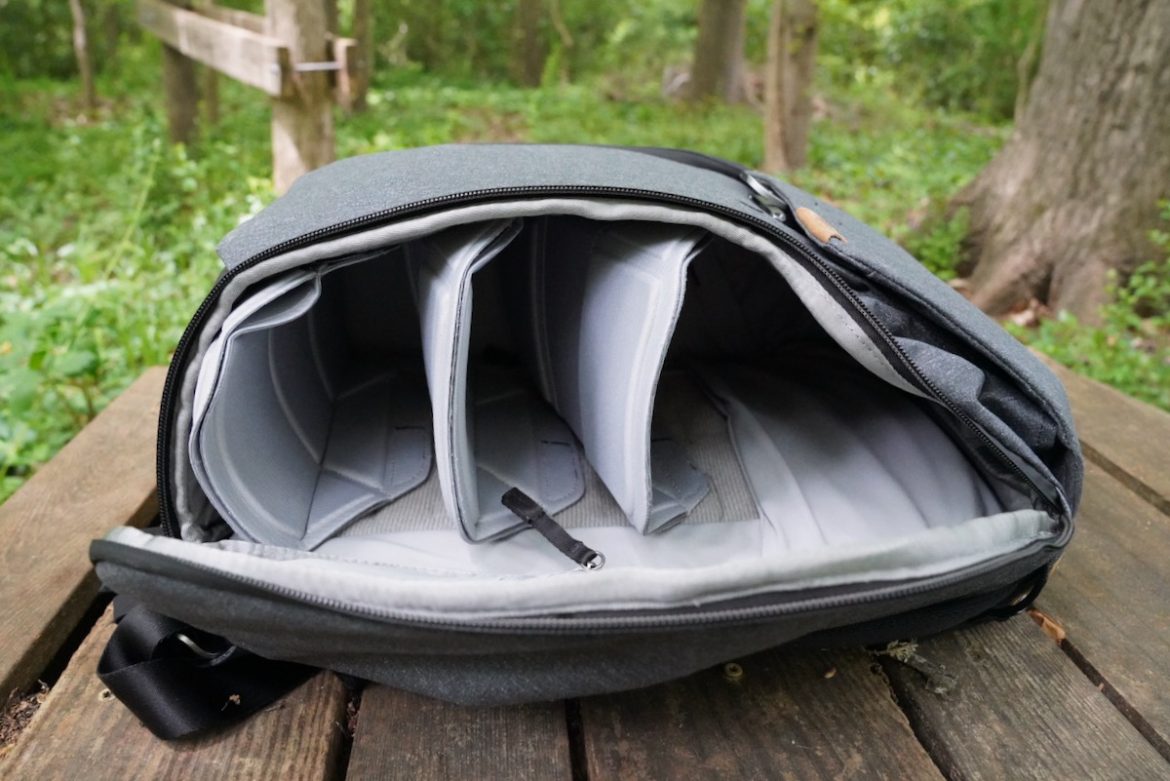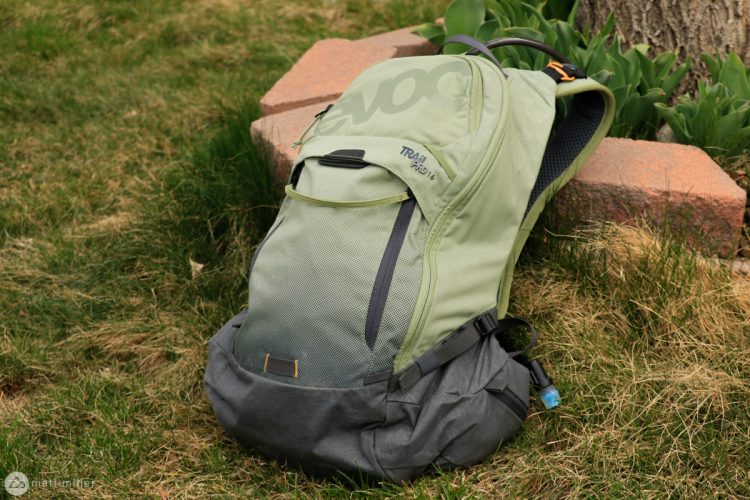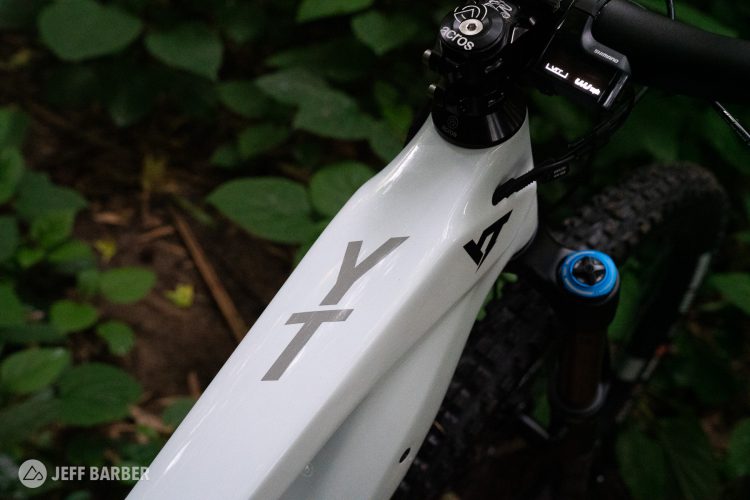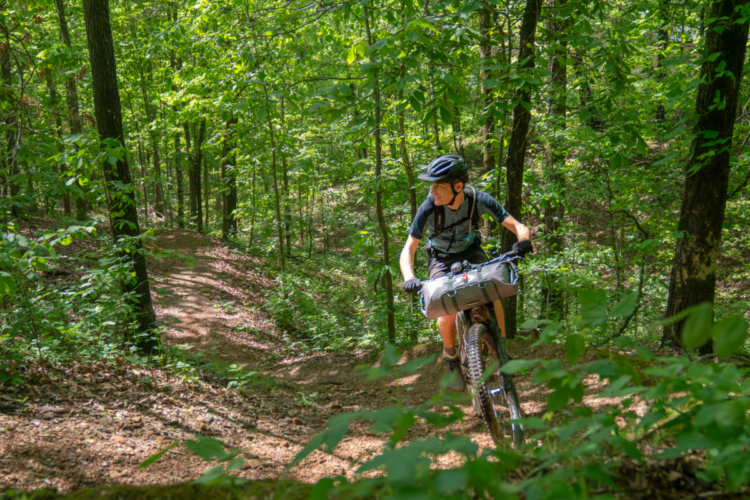
Peak Design Everyday Backpack
- MSRP: $259
- Buy from Peak Design
Mountain bike photography is a hazardous occupation, especially with expensive cameras. I’ve ruined plenty of good camera gear over the years due to lazy and haphazard packing on the trail. Basically everything that’s bad for a camera — dirt, moisture, vibration, and impact — is par for the mountain bike course. Last year I purchased a new camera and lens, and with the investment I vowed to get serious about protecting my baby. The Peak Design Everyday Backpack came highly recommended.
The Everyday Backpack is designed to carry pretty much anything securely, particularly photo gear and expensive electronics. Starting at the outside, the pack is wrapped in a DWR-coated nylon shell, and there’s also a waterproof bottom liner which should protect precious cargo from rear wheel spray. The zippers are robust and while they don’t appear to be fully waterproof, they are well fortified along the sides. The top flap provides plenty of overlap and is sloped to keep unexpected rain at bay. As an added bonus, Peak Design says the nylon shell is made from 100% recycled materials.


All of the panels that make up the backpack are padded and stiff, allowing the bag to keep its shape, even empty. There are two open side pouches for carrying a small water bottle, quick-access snacks, or a slim tripod. The thick, leather carry strap at the top feels like it’ll last a hundred years, and there are equally thick nylon-wrapped straps on both sides making it easy to grab the pack no matter how it sits.
Now, let’s talk access. The top flap attaches using a unique hook and bar system with an industrial look and feel. The bars are set at various intervals allowing the top to be cinched down tight for various load sizes. I’m not sure how practical the design is, but it sure looks and feels good. There’s also a zippered, padded pouch at the top of the pack for sliding a laptop inside. On a hike I used this spot for a couple of trail maintenance hand tools and I couldn’t even feel them on my back through the padding.

In addition to the traditional top opening, both the left and right sides zip open, making it easy to access gear without unloading the whole pack. Three dividers are included and each velcros into place. I adjusted the lower divider to snugly fit my big camera so it doesn’t rattle around inside the pack. The zippered left and right access panels have their own smaller zippered pouches perfect for storing tools, batteries, or lens covers. Each panel also includes a sleeve for additional storage.
It’s clear this pack was designed to look good in addition to providing functionality. Included straps for hauling additional gear like a tripod or bulky jacket outside the pack are hidden inside the side pockets and front panel for a neat, clean look when not in use.
The shoulder straps are similarly padded and wrapped like the rest of the pack and feature embedded magnets to keep them attached to the back of the pack when not in use. There’s a sternum strap that can be adjusted between three vertical positions and uses a metal clip that’s quick and easy to affix. Peak Design offers a hip belt (sold separately) that easily slides into place and is meant to further stabilize the pack for active use.
On the trail


I’m sure some mountain bike photographers will disagree with me, but over the years I’ve decided that photo-heavy days and hard riding days should remain separate. (That’s probably why some MTB photogs are big e-bike fans.) When I’m riding hard, my photos (and my gear!) end up suffering, and vice versa.
The Peak Design Everyday Backpack isn’t a bike-specific pack so it’s not something I would take for an all day ride, but for dedicated photo shoots a few miles into the woods it’s great. Everything is organized and easily accessible so I can quickly grab my camera and start snapping. Despite its rigid shape, the pack is fairly comfortable and stable, even fully loaded. The 20L version I tested is actually the perfect size for carrying a six-pack of beer in addition to a big camera and lens. After riding and shooting singletrack on a recent photo mission, I stopped by the local brewery and carried home not one but two six packs of beer in addition to my camera equipment.
Over time my last DSLR camera and lenses ended up getting damaged from dust and dirt on the trail, and I suspect the lenses also suffered from being rattled around for miles on end. So far I feel much better about the protection the Everyday Backpack offers; the zippers appear to be well sealed, and the dividers keep the camera off the bottom of the pack where crud and duff tend to accumulate. By setting the dividers at just the right heights, the camera doesn’t bounce around either.

For riding trails with the Everyday Backpack, the hip belt is hugely helpful, especially with a heavy load. The waist offers just enough padding and is wide enough that there aren’t any uncomfortable pressure points. I can confirm the pack works just as well, if not better, for hiking, and is a good choice for all-day, foot-powered missions.
One drawback to all of this robust protection is the weight of the pack: 4.4lbs. not including the hip belt. Of course my camera and main lens alone weigh three and a half pounds, so once it’s loaded, the weight of the pack itself becomes less relevant. Or does it? Riding with a full photo pack is a lot of work, and for me any amount of weight savings is welcome. But would shaving half a pound be worth the tradeoff in protection? If I’m honest, probably not. Riding hard and photo-ing hard will have to remain separate endeavors.
For me, the 20L offers plenty of storage capacity for most shoots. For bigger projects involving more equipment, I would probably want another photographer anyway — let them can carry the extra gear. Peak Design does offer a 30L version of the Everyday Backpack for even more haulage but fully loaded I would definitely want to pair it with an e-bike.
- MSRP: $259
- Buy from Peak Design












0 Comments